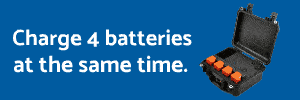Thanks Ansia. The airport is Tamiami Airport in Miami, on 137 Ave SW. What does VLOS mean?
Visual Line Of Sight.
You will want to Register with AirMap. The most helpful drone pilot's friend you will ever need. It is integrated with the FAA National Airspace Database in real time. It will provide you with all the details for any chunk of dirt in the entire USA with regard to the status of flying in that area. Best of all, even in the restricted airspace areas of the United States, the recent launch of LAANC for recreational drone pilots, Low Altitude Authorization and Notification Capability, will allow you to request authorization to fly in restricted airspace in literally seconds after applying. Note I said
restricted....
NOT prohibited. There is a big difference. The area you live in provides flying opportunities at ZERO (prohibited), 100, 200, 300, and 400 foot altitudes depending on how close you are to Tamiami runways. But because that is in restricted airspace
you must apply for permission (authorization) to fly in that area each time you put the bird in the air. But its no big deal to do.
Once you have created your flight plan online, added the minimal information details of who you are and what date and time you intend to fly, it may only take 20 or 30 seconds to get authorization to fly. I've used this a number of times in my flying areas in the next town where there is a control tower and restrictions.
So, visit this AirMap information page.
AirMap LAANC Airspace Authorization Read the material and then follow their outlined steps on how to proceed. You will need to be registered with them in order to apply for authorization to fly near controlled airports. Its actually a fun interactive app to use.
POINTERS: Install the iOS and/or Android apps on your phone or tablet so that its always with you. BUT when you begin planning a mission somewhere to fly, use the WEBSITE online app first for your details.
The reason is in your mobile app version it does not highlight uncontrolled airports in Class G airspace so you may not be aware of a local airfield or a private airstrip near the area you want to fly. The website online program does show all of those even miniscule airstrips and also identifies warning areas in unrestricted space like schools and other structures to be alert when flying around.
Here is what your Tamiami Executive Airport airspace looks like and associated altitude limits for the various regions around the airport. No doubt you will see your house location on the map. Note that the GRIDS are indicating airspace that requires authorization to fly or prohibits flying. Many airports overlap their 5 mile radius so in a given area the highest level of restriction will always apply to flying. As you can see there is an outer rim of orange that is uncontrolled airspace in Class G with no restrictions and therefore flying in that area only requires you to be alert to potential conflicts during your flight but no authorization is needed.
I will add that states like California are off the chart with respect to restrictions, many of which are local government restrictions and prohibitions. Other states and communities take a more common sense approach.
Good Luck and Safe Flying







